Cache Design
Contents
Cache
A hardware component in the processor that is small, but fast!
To achieve a high cache hit rate, data blocks need to be dynamically transferred between the cache and main memory (i.e. principle of locality)
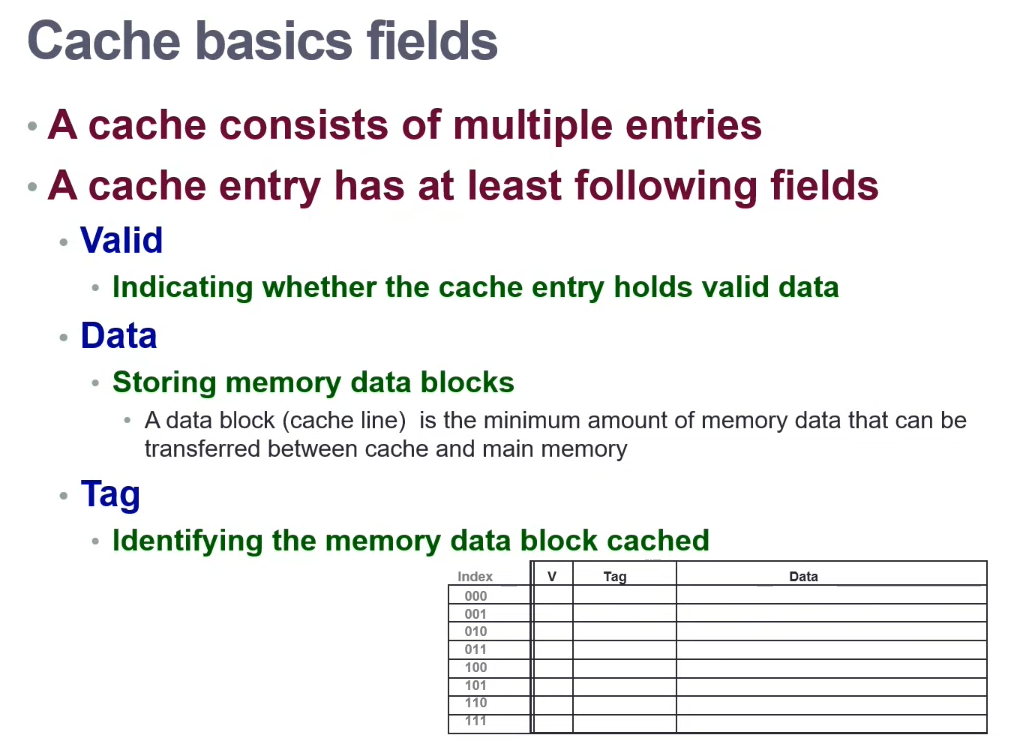
Blocks
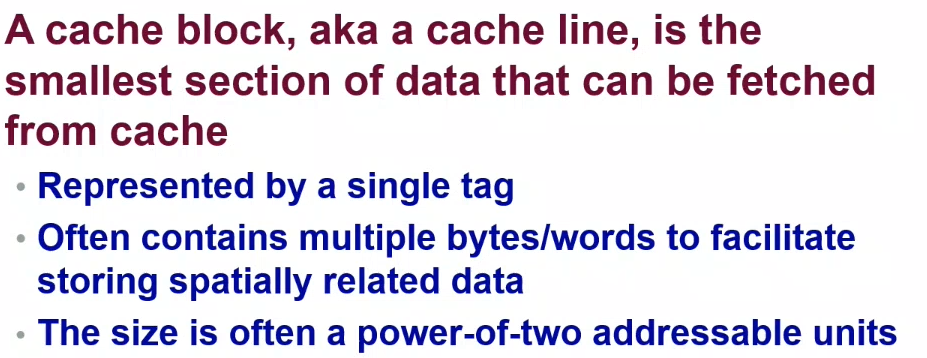
--> The tag is often the rest of the bits that weren't used to select the cache index

Cache Too Small?
If the cache is too small / block size is too big - we may run into a 'thrashing' issue- where the contents in the cache may start to constantly change -> negative impact as there will be a ~100% conflict miss.
i.e. if there are 4 cache blocks, but 5 items that need to be accessed. After the first four cache items populate, the fifth block will replace the first item; but then the first block will need to be read from the cache
- Solution 1 - Increase the cache size
- Solution 2 - Multiple entries for a memory block (a memory block can map to multiple cache blocks) -> refer to associative cache
Cache Structures
Direct Mapped Cache
A memory block can map to only one cache location
For a cache of 2^m blocks, a memory block with address X maps to the cache location X mod 2^m --> The least significant m bits of the memory block address
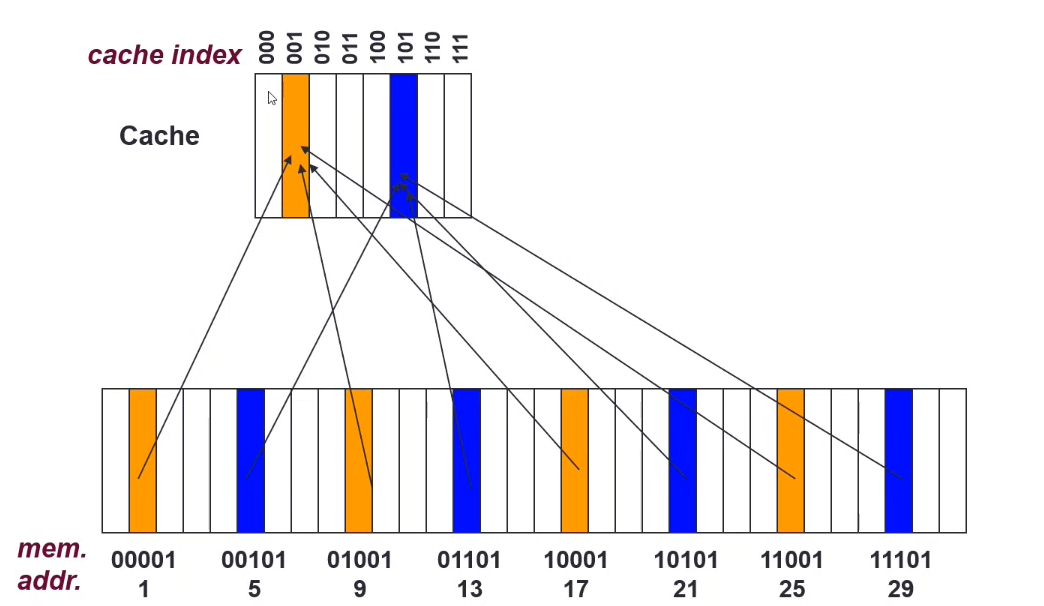
Multiple addresses will map to the same cache block (and compete for use)
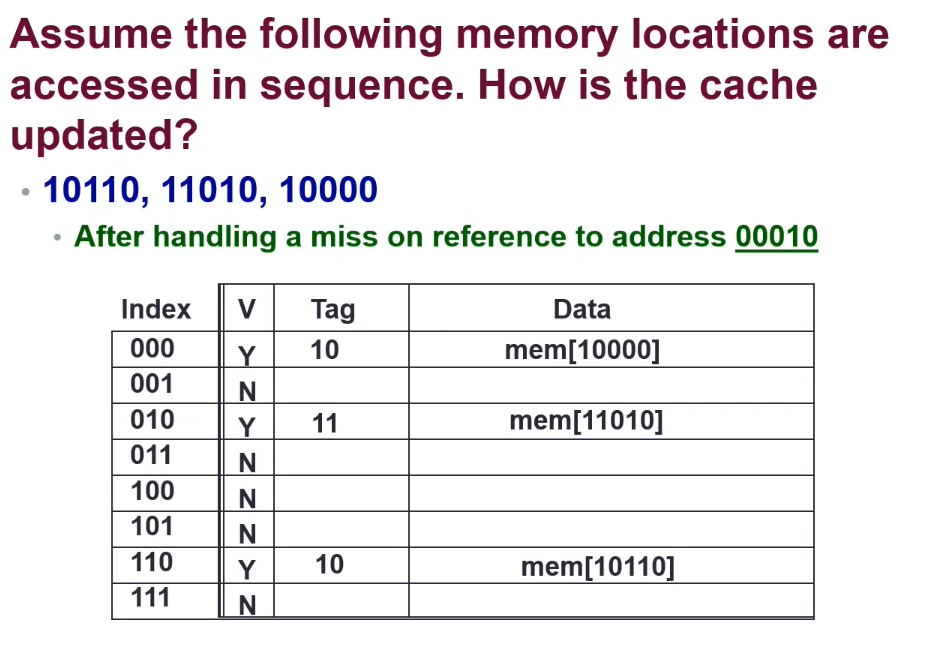
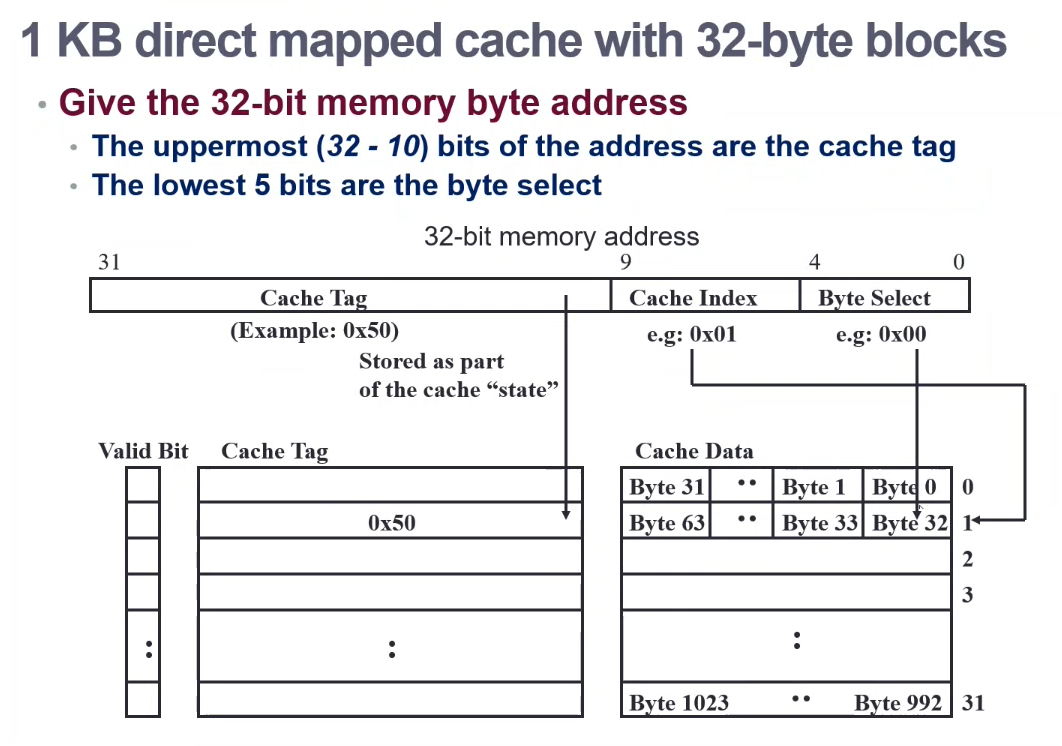
Set Associative Cache
n-way set associative cache
The cache is divided into sets, each that contains n blocks. A memory block is mapped to a set, and can be stored in any location in the set.
ncomparators are required to search a block in a set

Given an 8-block cache, how is the memory block 12 placed in the cache using a 2-way set associative cache?
There are 4 sets of 2-block caches, so 12 % 4 = 0 -> Set 0 will be used
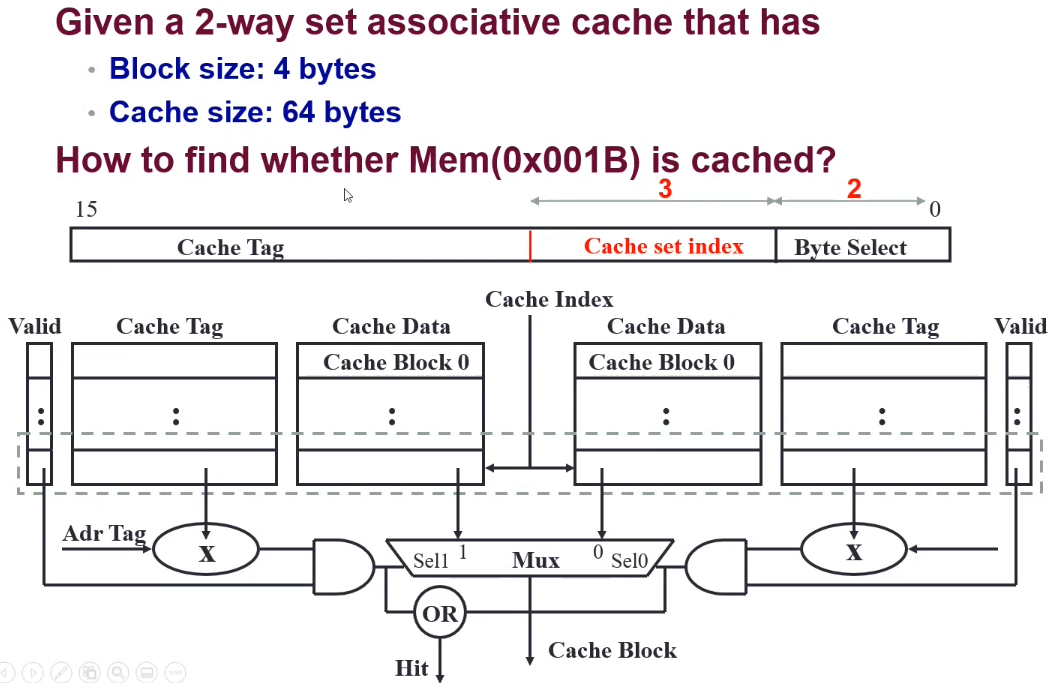
2-> Block size is 4 byte = 2^23-> 64 byte cache / (2 * 4 byte blocks) = 8 sets of 2 blocks; 8 = 2^3
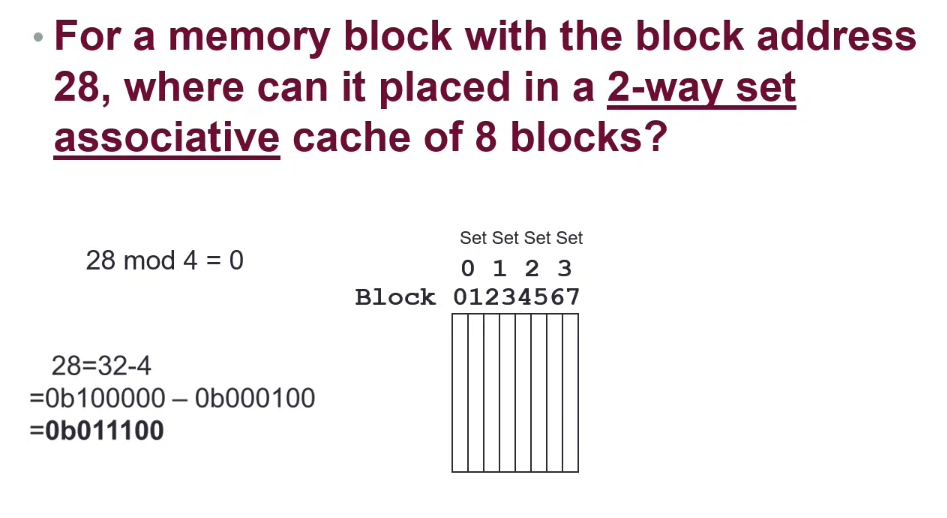
Fully Associative Cache
A memory block can be mapped to any location in the cache; however this increases the cache search time, as the full cache needs to be searched for a memory block
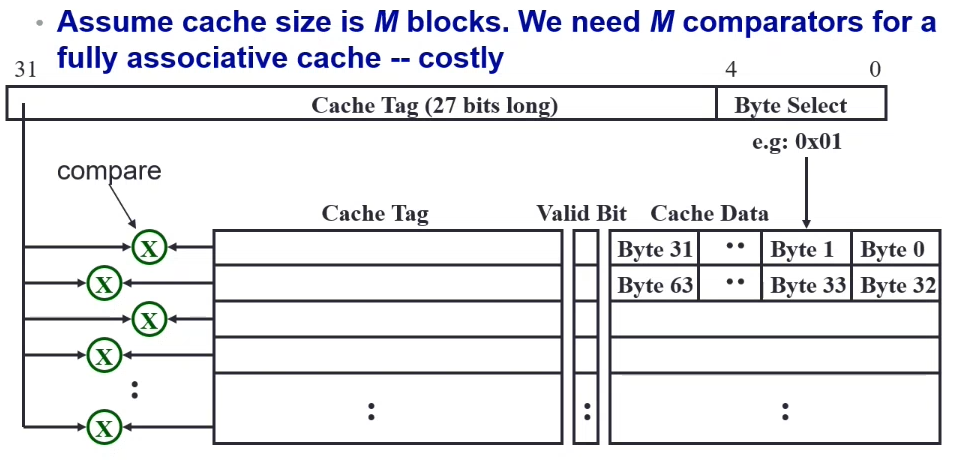
Cache Concerns
Where to put a memory block in cache?
Block Placement Strategy
- Direct mapped - only one location
- Fully associative - Anywhere
- Set associative - Any location in a set
How to find a memory block in cache?
Block Identification
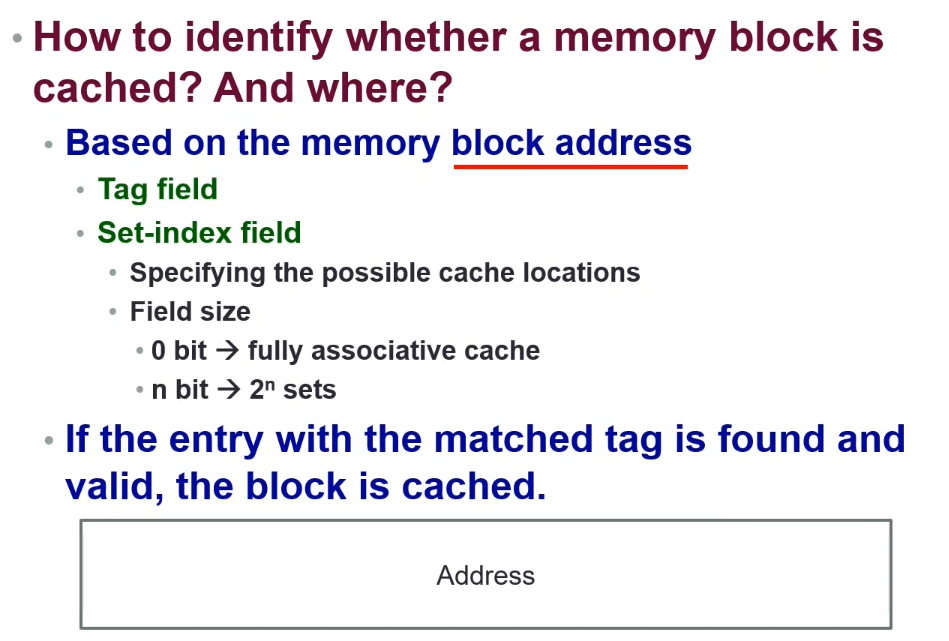
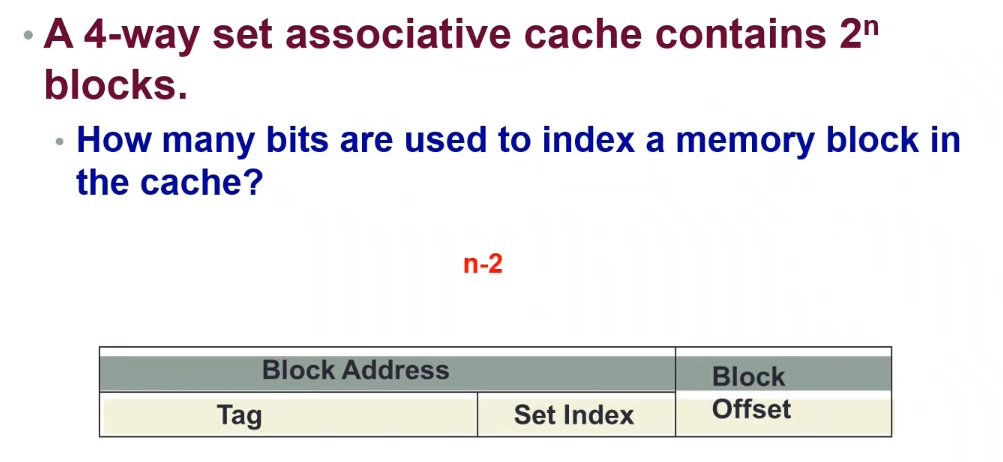
( 2^(n-2) )
If there are no free spaces, which block will be replaced?
Block Replacement
- For a direct mapped cache - as only one location can be used, the contents at that location must be replaced
- For set associative / fully associative
- Random - random location [of the set] chosen
- Least Recently Used
- "optimal"
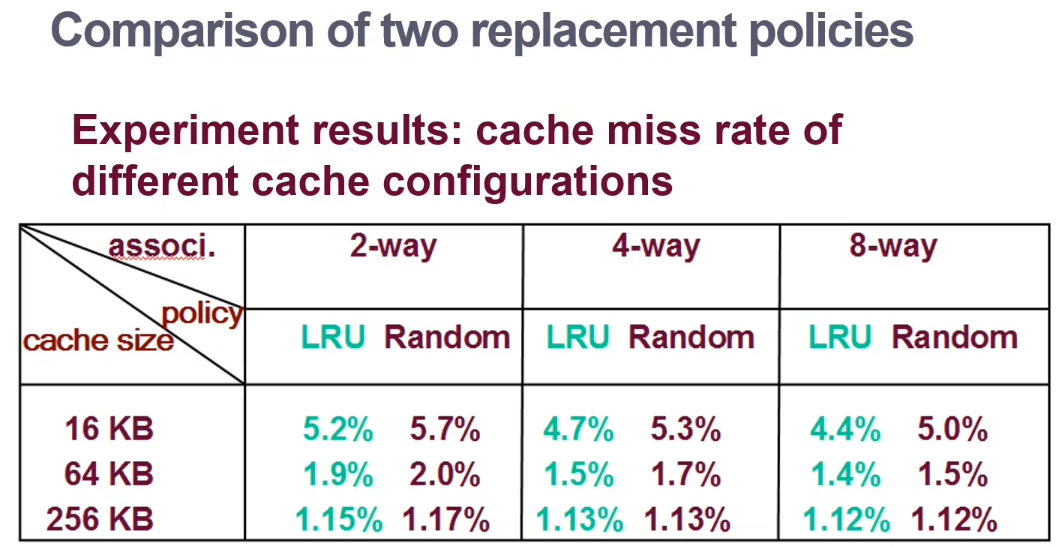
- The larger the cache size, the lower the cache miss rate (more data can be cached)
- The higher the associativity (2 way -> 4 way -> 8 way -> etc) the lower the cache miss rate
- The cache miss rate for LRU is less than the miss rate for random replacement
When memory data is updated, how is the cache involved?
Write Strategy
- Cache hit -> Write through
- Written to both cache and memory
- (+) Read misses don't result in writes
- (-) Potentially high memory traffic
- Cache hit -> Write back
- Written only to cache
- The modified cache block is written to memory only when it is replaced
- Dirty bit is required to facilitate this functionality
- (+) memory accesses
- (-) cache coherence issue
- Cache miss -> Write allocate
- Fetch-on-write
- Fetch data from memory
- Write to the cache
- Not-fetch-on-write
- Do not write to the memory
- Write to cache
- The cache block is invalid, except for the data word that is written
- Fetch-on-write
- Cache miss -> Write not allocate
- Skip the cache
Cold Start Miss
Compulsory miss that occurs when a block is first accessed (hence has never been cached)
Conflict Miss (Collision Miss)
For associative caches, occurs when blocks must evict another block in a set
Capacity Miss
Fully associative cache is filled completely
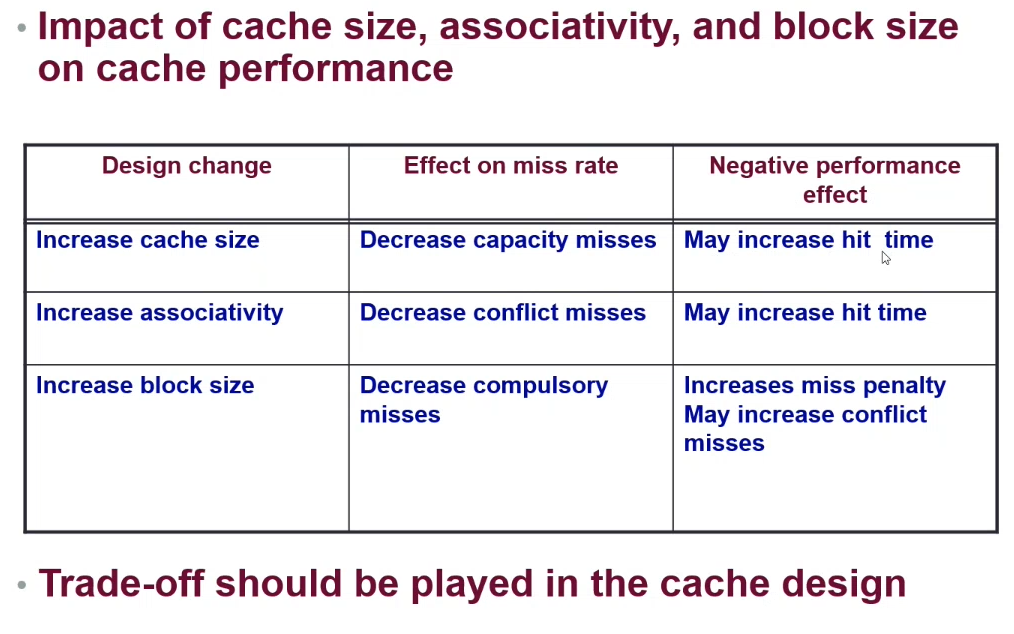
Write Buffer
To reduce the impact of slow memory access, a write buffer (FIFO) can be used.
- Processor writes data to the write buffer
- Memory controller writes contents of the buffer to the memory
- Typically has 4 entries
- Works if
write frequency << 1 / DRAM write cycle
Buffer Overflow
If write frequency > 1 / DRAM write cycle then a buffer overflow may occur (the write buffer is filled up and more data comes in)
A solution is to implement a second cache (L2)
Cache Design

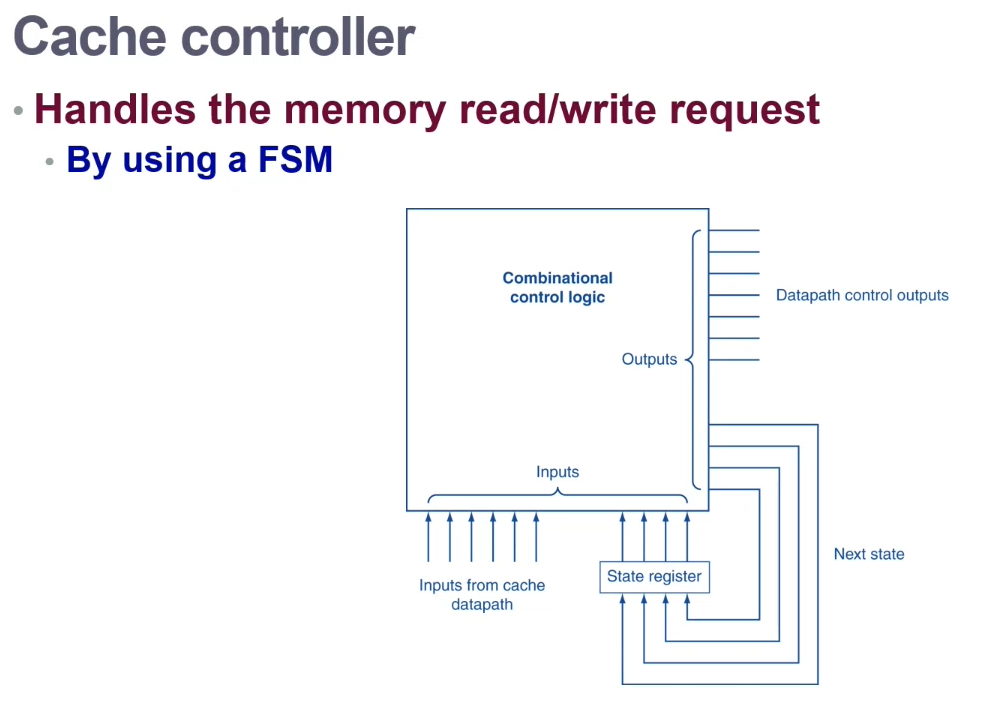

Note: The Compare Tag stage might take time - could split it into smaller stages, so that the clock cycle time can be reduced
